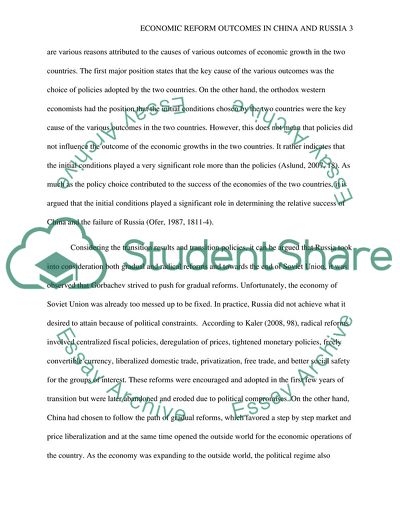Cite this document
(To what extent are the different economic reform outcomes in China and Essay - 1, n.d.)
To what extent are the different economic reform outcomes in China and Essay - 1. https://studentshare.org/macro-microeconomics/1827991-to-what-extent-are-the-different-economic-reform-outcomes-in-china-and-russiaor-plus-eastern-europe-due-to-the-pace-of-reform
To what extent are the different economic reform outcomes in China and Essay - 1. https://studentshare.org/macro-microeconomics/1827991-to-what-extent-are-the-different-economic-reform-outcomes-in-china-and-russiaor-plus-eastern-europe-due-to-the-pace-of-reform
(To What Extent Are the Different Economic Reform Outcomes in China and Essay - 1)
To What Extent Are the Different Economic Reform Outcomes in China and Essay - 1. https://studentshare.org/macro-microeconomics/1827991-to-what-extent-are-the-different-economic-reform-outcomes-in-china-and-russiaor-plus-eastern-europe-due-to-the-pace-of-reform.
To What Extent Are the Different Economic Reform Outcomes in China and Essay - 1. https://studentshare.org/macro-microeconomics/1827991-to-what-extent-are-the-different-economic-reform-outcomes-in-china-and-russiaor-plus-eastern-europe-due-to-the-pace-of-reform.
“To What Extent Are the Different Economic Reform Outcomes in China and Essay - 1”. https://studentshare.org/macro-microeconomics/1827991-to-what-extent-are-the-different-economic-reform-outcomes-in-china-and-russiaor-plus-eastern-europe-due-to-the-pace-of-reform.


